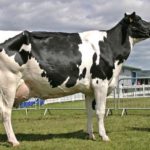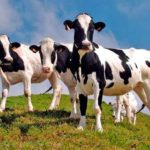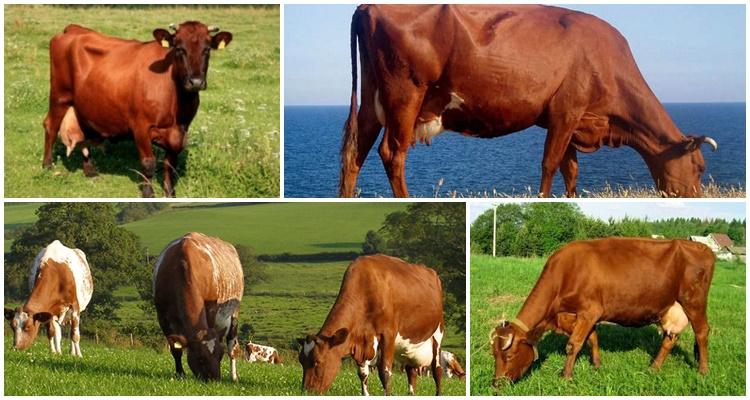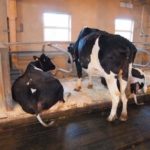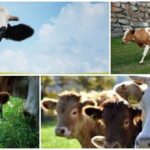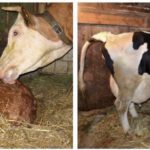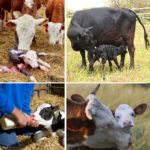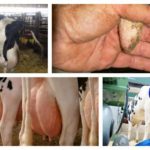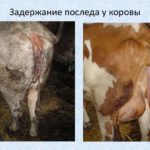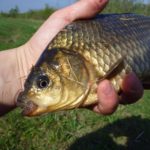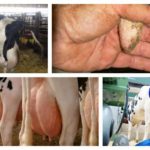Throughout its life, cattle go through several stages of development, starting from a newborn calf and ending with an adult animal. Each stage requires careful attention from the farmer. Beginners are advised to take into account the main features of their development before purchasing heifers. Many people prefer to choose heifers. Such a purchase has a number of pros and cons.
What is a heifer in livestock farming?
A heifer is a heifer, or female cattle, that has never given birth to offspring, but has already been successfully impregnated. This term is applied before the birth of the first calf. Subsequently, the cow begins to be called a first-calf.
What to look for when selecting an animal
It is worth buying heifers from agro-industrial farms or specialized farms. In such places, basic veterinary standards for breeding animals are observed. The main purpose of such organizations is considered to be the sale of livestock. Therefore, they are interested in raising healthy offspring. There you can also get information about the pedigree and information regarding the conditions of detention.
When buying an animal, you should consider the breed and other parameters:
- Age is determined by the horns. The number of rings indicates the number of calvings. When purchasing a heifer, the rings must be missing. The age of the cattle in this case is 14-20 months.
- State of health - it is judged by external signs. Healthy individuals have clear eyes, a light pink tongue and the same lips. Smooth coat with a beautiful shine is of no small importance. It is also worth listening to the cow's breathing. There should be no heaviness, coughing or wheezing. Visually, the animal should be well-fed. Any signs of exhaustion are unacceptable.
- The torso must be properly developed and proportional.
- Behavior - it is important that it is balanced.
Advantages and disadvantages of purchasing
If a farmer plans to buy pregnant a cow at a good stage of pregnancy, it is worth analyzing the main pros and cons of such an acquisition.
Usually it is possible to determine the quality of a heifer by the older generation. Of course, it is impossible to get a 100% guarantee, but the farmer’s chances of buying a productive cow increase.
How to find out that a cow is pregnant and give birth
To determine pregnancy, you should pay attention to physiological and behavioral signs.
These include the following:
- a pregnant individual becomes more cautious and calm;
- already in the first weeks of pregnancy, appetite increases significantly;
- the cow's coat becomes smoother and shiny - it seems very well-groomed;
- clear mucus is discharged from the vagina;
- the state of hunting disappears.
To understand that cow preparing to give birth, it is worth paying attention to certain changes. They will be visible even to novice farmers. Approaching calving can be suspected by the following symptoms:
- swelling of the genital organs - in this case, swelling of the genital slit is observed;
- udder swelling;
- the appearance of milk discharge from the nipples;
- opening of the genital slit and mucous discharge from the vagina - these indicate the removal of the plug.
The appearance of external changes is the basis for constant monitoring of the animal, since the calf will be born in the coming hours. The cow does not need special care during calving. During contractions, it is recommended to wash the female with a soapy solution - it should be warm. After which the animal is dried.
If the cow is lying on her side, she needs to place a pillow of hay under her head. When calving for the first time, the animal must be constantly calmed. If severe stress occurs, brushing the sides with a stiff brush will help calm the animal.
Features of feeding heifers
For a cow to be productive and healthy, it must be fed properly. Many pathologies of first-calf heifers are associated with disturbances in the diet before calving. Unbalanced nutrition of heifers reduces the productivity of animals after birth by 20-25%.
If heifers are not properly fed, the content of ketone bodies in the blood increases, an imbalance of calcium and phosphorus occurs, and the alkaline reserve decreases. After calving, the volume of immunoglobulins, proteins, vitamins, and fats in colostrum decreases.
If heifers are not well-fed, it is difficult for them to survive calving. Such animals are not able to recover for a long time. Also, lack of nutrition can lead to problems with milking of first-calf heifers at the initial stage of lactation.
This is because it is difficult to provide a malnourished cow with the nutrients she needs to produce milk. Therefore, at the initial stage of lactation it is usually not possible to normalize the body weight of first-calf heifers.
Rules for caring for animals
In order for heifers to fully develop and remain healthy, it is important to provide them with good housing conditions. A pregnant cow requires a separate large box. It is also permissible to keep it in a tethered manner. The heifer housing should be free of dirt or drafts. It is important to ensure that the floor is not slippery. It should also not contain sharp protrusions or have uneven areas. In normal weather, grazing duration should be 2-4 hours a day.
In the summer, it is recommended that heifers and herds be grazed on pasture. It is important to provide the cow with clean, dry bedding.
After calving, it is recommended to wash and dry the cow well. In this case, the calf must be left near the mother for 14-20 hours. After 30 minutes, the first heifer should be given warm water to drink.
12 days after calving, the cow needs a more abundant and nutritious diet. Fodder beet should be used as an additive. It is also permissible to use special concentrates. It is recommended to milk first-calf heifers especially carefully. It is important to do this not with pinches, but with your fist. When choosing heifer cows, it is recommended to take into account a number of features. These include age, health status, and appearance. When purchasing heifers, they need to be provided with proper care and a balanced diet.



